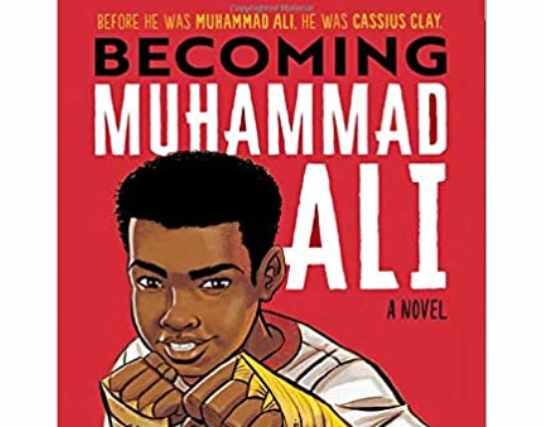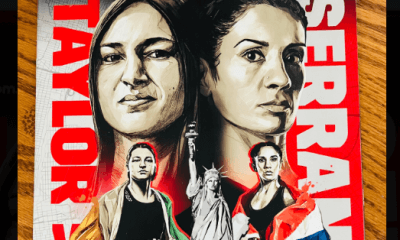Featured Articles
Literary Notes: “Becoming Muhammad Ali”

BOOK REVIEW by THOMAS HAUSER — James Patterson is one of the world’s bestselling authors and a brand unto himself. He has written or co-authored more than 150 books, 67 of which have risen to the #1 slot on the New York Times bestseller list. Patterson’s website lists 28 titles that he has authored or co-authored in 2020 alone with four more due before the end of the holiday season. In recent years, he has been credited with authoring six percent of all hardcover fiction sold in the United States. These are staggering numbers.
There’s an issue as to how much of the output credited to Patterson is his own work. As noted above, many of his books are co-authored. And publishing is a strange business. By way of example, Robert Ludlum died in 2001. Thirty books have been written and published under his name since then.
That said; one can assume that, when Patterson co-authored The President is Missing with Bill Clinton, Patterson rather than the former president did most of the writing.
Patterson has also launched a line of books aimed at young readers under the imprint Jimmy Patterson Books. Becoming Muhammad Ali, co-authored with Kwame Alexander (a writer and poet whose most celebrated work has been in the field of children’s literature) is his latest offering in that genre.
Becoming Muhammad Ali is a novel. For the uninitiated, that means it’s classified as fiction. The story is told in the first person by a narrator named Lucky who informs readers that, when he was growing up in Louisville, Cassius Clay was his best friend. Lucky’s prose is intertwined with poetry, some of which was written in theory by young Cassius Clay and the rest by Lucky.
The storyline traces Clay’s growing up in Louisville through his first Golden Gloves National Championship with brief references to some of Ali’s professional fights. The book is likely to become a best-seller because of Patterson’s name and the marketing apparatus behind it. That said; the methodology chosen by the authors raises several issues.
The novelization of a famous person’s life works best when it’s placed within a historically accurate framework. I have no problem with the authors creating Lucky, inserting him into the narrative, and imagining a history between him and Cassius. Changing the known historical record is another matter. And there are times when Patterson and Alexander do that. It’s hard to know where reality ends and fantasy begins in their recounting of young Cassius Clay’s life. Fact and fiction blur, which can be confusing for a young reader. I know it was confusing for this old one.
To take one small example; Becoming Muhammad Ali identifies a neighborhood bully named Corky Butler (presumably based on Corky Baker, a real-life contemporary of Clay’s) as the person who stole 12-year-old Cassius Clay’s bike. That theft led Cassius into boxing. But in reality, Clay never learned who stole his bike and much of his interaction with Corky as recounted in the book is fantasy.
Also, there are more than a few unintended factual errors.
One poem declares that Sugar Ray Robinson “wipes the mat with his opponents one hundred and seventy-three times, almost half of them before the first round ends.” But BoxRec.com credits Robinson with 20 first-round knockouts in his 199-fight career (which is a far cry from “almost half” of 173).
Another poem talks of Joe Louis “battering each of his 51 opponents in knockouts as heavyweight champion until he met the Brockton Bomber.” That’s just wrong. Louis had 26 fights as champion and won 23 of them by knockout. Then he retired, lost a comeback fight against Ezzard Charles, and after that had eight non-title fights (winning five by decision and three by KO) before being knocked out by Rocky Marciano.
Similarly, the book says that, after Ali-Frazier III, Muhammad lost his next two bouts and that they were the last fights of his ring career But Ali won six consecutive fights after Manila before losing three of his final four bouts.
Also, Willie Pastrano (who interacted briefly with young Cassius Clay) did not have “one of the most powerful left hands anybody had ever seen.” To the contrary, he was a notoriously light puncher with 14 knockouts to his credit in 83 professional fights.
Some of the poems in Becoming Muhammad Ali are moving; others are funny. They would have been just a good if the facts had been accurate.
At its best, Becoming Muhammad Ali is an entertaining impressionistic journey through Ali’s youth as Cassius Clay. Given the talent of its co-authors, it could have been better.
Thomas Hauser’s email address is thomashauserwriter@gmail.com. His next book – Staredown: Another Year Inside Boxing – will be published by the University of Arkansas Press this autumn. In 2004, the Boxing Writers Association of America honored Hauser with the Nat Fleischer Award for career excellence in boxing journalism. He will be inducted into the International Boxing Hall of Fame with the Class of 2020.
Check out more boxing news on video at the Boxing Channel
To comment on this story in the Fight Forum CLICK HERE
-

 Featured Articles4 weeks ago
Featured Articles4 weeks agoAvila Perspective, Chap. 330: Matchroom in New York plus the Latest on Canelo-Crawford
-

 Featured Articles3 weeks ago
Featured Articles3 weeks agoVito Mielnicki Jr Whitewashes Kamil Gardzielik Before the Home Folks in Newark
-

 Featured Articles8 hours ago
Featured Articles8 hours agoResults and Recaps from New York Where Taylor Edged Serrano Once Again
-

 Featured Articles4 weeks ago
Featured Articles4 weeks agoCatching Up with Clay Moyle Who Talks About His Massive Collection of Boxing Books
-

 Featured Articles5 days ago
Featured Articles5 days agoFrom a Sympathetic Figure to a Pariah: The Travails of Julio Cesar Chavez Jr
-

 Featured Articles3 weeks ago
Featured Articles3 weeks agoMore Medals for Hawaii’s Patricio Family at the USA Boxing Summer Festival
-

 Featured Articles7 days ago
Featured Articles7 days agoCatterall vs Eubank Ends Prematurely; Catterall Wins a Technical Decision
-

 Featured Articles4 weeks ago
Featured Articles4 weeks agoRichardson Hitchins Batters and Stops George Kambosos at Madison Square Garden




















